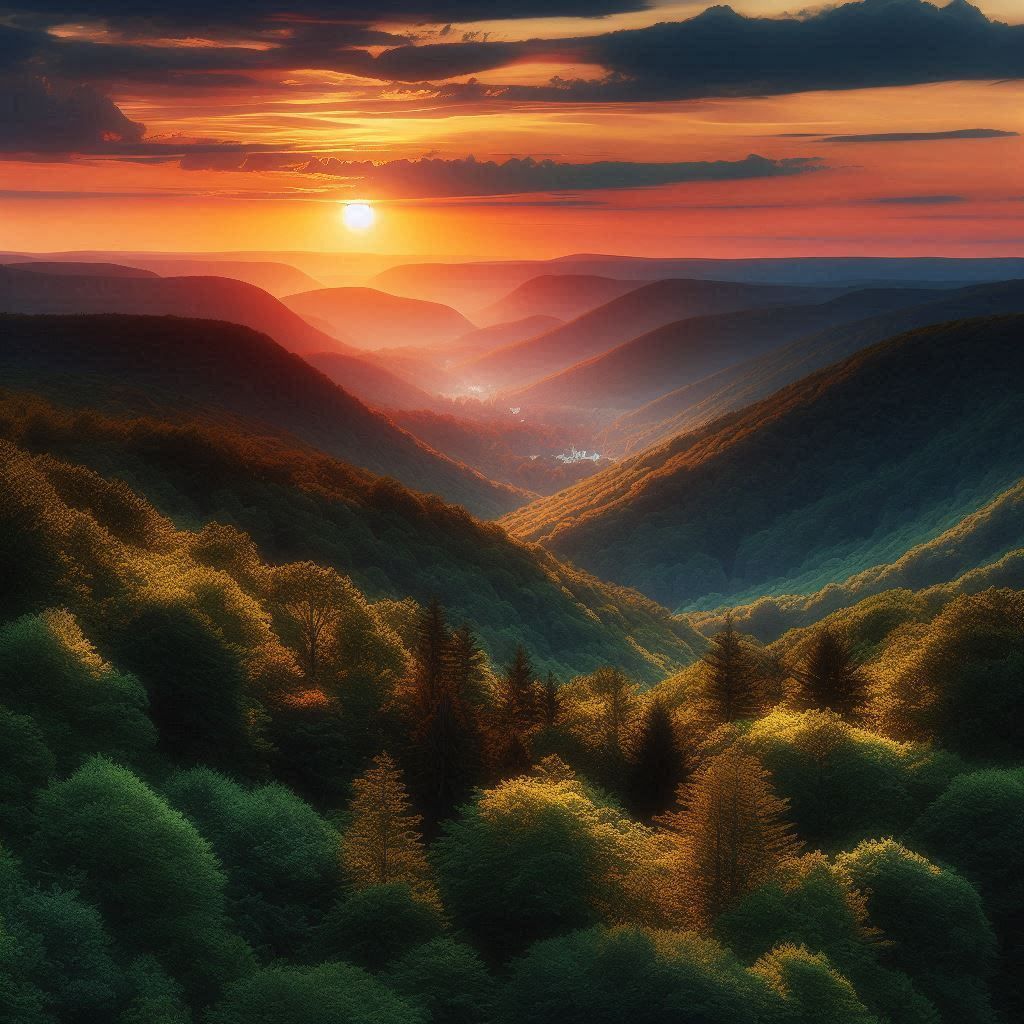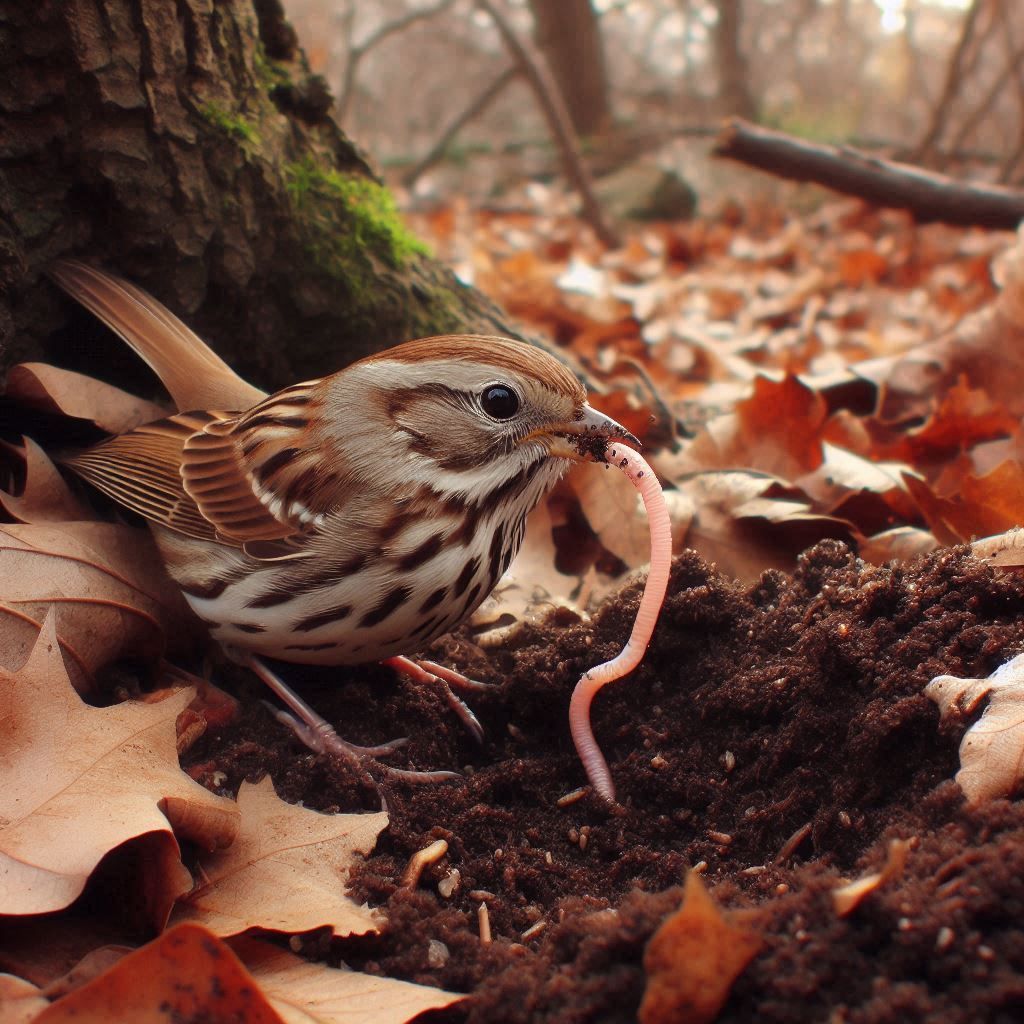Regular Old Traditions, Little Old Mountains, and Big Old Rocks
It’s December. The days are short, and the nights are long. I feel the age-old impulse to brighten up the darkest month of the year with lights, evergreens, and loads of other decorations that sparkle, glitter, and glow. Even though doing so seems ridiculous. What with living here in the woods with only my husband, not a neighbor in sight, and off a secluded dirt road where winter traffic is all but nonexistent.
Nonetheless, the impulse is a strong one. It harkens back to the ancient cultures of the Celtic, Norse, and Roman people, all of whom incorporated lights (candles), evergreens, and ornaments into their December holidays of Yule and Saturnalia respectively. Add to this that my immediate girlhood family was bonkers for Christmas decorating, and it becomes abundantly clear that I don’t stand a chance to not deck the halls come December.
The most blatant example of my family’s craziness for jazzing up domiciles at Christmas was my maternal grandmother who, upon seeing her sister’s home all decorated for the holidays, returned to her own abode in the company of the green-eyed monster. Consequently, Grandma then proceeded to smash a sizable hole through the floor of her family’s living room. Up through which she pushed a gushing garden hose, thus creating a “Parisian fountain” for the toy train on yuletide display to chug past.
While her children, including my mother, were thrilled with their mum’s creative cleverness, her husband was none too pleased. He appreciated neither the glaring inclusion of the hole of my grandmother’s smashing nor the warping from the “Parisian fountain” to the hardwood floor he had recently refinished by hand. Likewise, he did not consider it a good thing that the splashing water from said “Parisian fountain” rendered the motor of his prized Lionel train inoperable. (Luckily, my grandfather was a gentle soul head over heels in love with his wife.)
With such a grandmother, as well as other dead relatives who were also looney for embellishing their Noel digs, it is excruciatingly obvious to me that, even if I live to be a hundred plus years, I do not have a snowball’s chance in hell to ever escape decorating for Christmas. By God, it’s tradition! Accordingly, lest the ancestral ghosts of Decembers past come and terrorize me, I decorate like the mad woman progeny I am.
Familial custom strictly dictates that all Christmas decorating be completed by St. Nicholas Day, December 6. This inherited draconian rule means that I must begin decorating pretty much immediately after Thanksgiving. Time to wash up the greasy dinner dishes and store the heaps of leftover turkey and all its trimmings is allowed, but just barely. Rigorously forbidden is putting one’s feet up and relaxing for a spell. (Ghosts, especially those of family, are hard taskmasters.)
Post haste, up goes the Christmas tree, which I must admit, my husband and I have been lucky with the thirteen holiday seasons we have been together. Somehow, we always manage to pick out the perfectly formed Frasier fir that has enough agreeable Christmas spirit to stand straight in its stand with relatively little aggravating adjustment and no infuriating tipping over. (Knock on wood.) Upon it I then hang fairy lights, along with clear glass balls I stuffed with tinsel in a variety of colors thirty-odd years ago, candy canes slightly melted from their summer storage, a ceramic snowman my son painted when he was six, his name scribbled upon the back, my favorite hand-painted, flowered ornament from childhood, a little fabric doll dressed in red a beloved aunt gave me on the day I was born, etc. etc. All of which is fittingly topped with a garish plastic star.
Next, out come all the ceramic Santa Clauses my mother and I painted together for years. They are not the most elegant or sophisticated way to decorate a home, but they remind me of my mother and the fun we shared painting those figurines, which are supposedly representations of how Santa is portrayed in different countries around the world. Though the truth is, someone took a lot of liberties with their artistry.
Not elegant or sophisticated too are the glitzy wreaths and all the additional gaudy shiny stuff I hang and place about the cabin. The saving graces are perhaps the vintage lighted Santa Claus and angel I have had in my life all my life. They are both made of cheap plastic and not in the best shape, but they are timeless, and they have a sweet, soothing appeal.
Once the inside of the cabin is decorated, it is time to go outside to untangle, fiddle with, and string lights until my fingers either go numb or bleed or both. After that, there are more artificial wreaths and other Christmas goods galore to unpack, drag out, and find just the right spot for each to show off in all its man-made glory.
I sound like I hate Christmas decorating, but I do not. Despite its frustrating, time-consuming, and tiring aspects, I cherish it and all the merry, celebratory memories that go along with it. It makes me feel like my grandmother, parents, and other missing loved ones are still with me. We are together again in the season of togetherness.
Yet, I could decorate my fingers to the bone, and I still would not come even close to giving Mother Nature a run for her money. Even in the dead of winter, for dazzling adornment, she will always be the champ.
As it invariably does, that reality became obvious recently as I hiked a short section of the 250-mile Tuscarora Trail, a spur of the Appalachian Trail. Starting from Pennsylvania’s Cowans Gap State Park in the Buchanan State Forest and heading south, the trek soon requires a significant amount of somewhat tricky boulder scrambling, but, wow, is it worth it. The forest along the trail in Cowans Gap is exceptionally beautiful with lots of various evergreens and good winter views of the mountains. I was particularly delighted to spy Pyramid Point, aka Sidneys Knob or Henry’s Knob, a markedly atypical Pennsylvania mountain. Whereas virtually all Pennsylvania mountains, with their soft, voluptuous curves, are what I see as feminine in form, Pyramid Point is conical in shape. I would not exactly call it phallic, like the mountains out west and in other places around the world, but in my view at least, Pyramid Point does have a bit of masculine charm. Which I laughingly imagine causes quite an amorous stir among the surrounding ladies.
In about four miles, Big Mountain, the highest point on the Tuscarora Mountain Ridge, is reached. Its overlook, also accessible by car via Tower Road in Fulton County, cannot be beat for an expansive and stunning scenic view. Standing on the overlook’s rock outcropping, spread out below is the vast Path Valley. Its Cococheague Creek leads to the Potomac River. Also included in the panorama are mountains like Hogback, Kittatinny, Little, Broad, Cove, and Parnell Knob, along with the highest point on Blue Mountain Ridge, Clark’s Knob. While appearing with exceptional distinction is the gentleman of my silly whimsy, Pyramid Point. All in all, an extraordinary display of Northern Appalachian lure.
Even more than the breathtaking, bird’s-eye view from atop Big Mountain, amazing is what can be heard there. It is a voice. The clearest, most calming, reassuring, encouraging, and honest voice there is. The voice of silence.
It is a voice I am afraid I often fail to honor. But I’m only human. So there. That’s my story, and I’m sticking to it.
Another wonderful, recent Pennsylvania visit was to Columcille Megalith Park on Blue Mountain in Northampton County. Recognized by the Smithsonian American Art Museum as a cultural heritage center, Columcille contains seventeen acres of mountainous woodland with walking trails that pass by ninety-some megalith settings of giant rocks. Practically all these colossal stone beauties were harvested from the Blue Mountain area. (The exceptions being several cut granites from Minnesota which were gifted to the park.)
Columcille’s largest megalith is a twenty-foot-tall boulder weighing forty-five tons. Other megaliths range in weight from four to fifteen tons. There is also a hexagonal chapel, a cylindrical bell tower, and what looks to be a portal called the Celtic Eye. All three are made of uncut native stone.
The park was inspired by a dream its founder, William H. Cohea, Jr., had when he was visiting Scotland’s Isle of Iona. Iona’s rugged landscape is thought to be made up of some of the oldest rocks on Earth. The Celts believed it to be a “thin place” where heaven and earth seem to touch. Today, as it has been for almost fifteen hundred years, Iona is a pilgrimage destination, principally for Christians.
The creation of Columcille was further influenced by the many prehistoric megalithic structures found in the British Isles, probably the most famous being Stonehenge. As is now presumed true during Europe’s New Stone Age, or Neolithic Period, the purpose of Columcille’s massive standing stones is to connect people with the energy of the earth and sky, thus promoting renewed creation of the human spirit. Additionally, the park provides a sacred place for meditation, reflection, and obtainment of comfort and tranquility. As it certainly did for me.
From the trilithon, Thor’s Gate, to the Mannanan Stone, named for the Celtic god of the sea and king of the Otherworld, one of the things that struck me about the megaliths of Columcille is the uniqueness of each. Every boulder is different and special in its own way. All have various fascinating colors, shapes, textures, and markings. Although I cannot rightly claim that any of the stones talked to me, it was easy to feel each has an incredible, adventure-filled story to tell. If only I knew how to listen in their language.
There is something else about the megaliths of Columcille. It is something for which there are no wholly adequate words. The best way I know how to get even close to describing it is a quote from the children’s classic tale, The Little Prince by Antoine De Saint-Exupery. In the book, the solitary airplane pilot who has crashed in the desert and is stranded there says “I was surprised by suddenly understanding that mysterious radiance of the sands.”
Which is what is instinctively recognizable about the standing stones of Columcille Megalith Park. They have a “mysterious radiance.”
It makes no real sense, but there it is. The megalithic rocks of Columcille have a “mysterious radiance.” Not exactly a light, but a light of sorts. A different kind of light that is both serene and benevolent.
Speaking of peace and goodwill, I am reminded of the ending I wrote last December in my musing, “Yes, Virginia.” It was “Peace on Earth. Goodwill to All.”
Neither has happened. Countless conflicts of all types yet rage across the globe. Still exceedingly rare is the person who, unlike me, ever extends kindness and generosity towards everyone. No exceptions.
I am not surprised. I knew when I wrote those words last year, my wish was a fanciful one and the ultimate example of hoping against hope. As it is every year. Year after year.
To keep it up with no happy fulfillment in sight is disheartening and heartbreaking.
Yet, Peace on Earth and Goodwill to All is possible. It can happen. Surely not for a long, long time. But it can happen.
So, what the heck. I will take my clue from some regular old traditions, little old mountains, and big old rocks.
Peace on Earth. Goodwill to All.

Credit: Bing Image Generator
Share this post via









